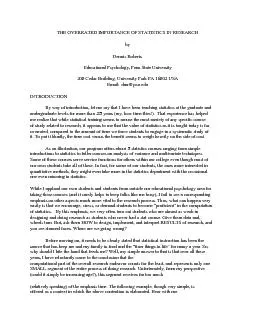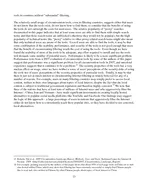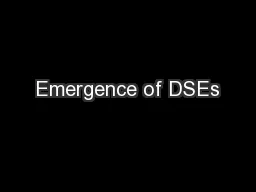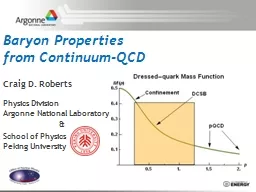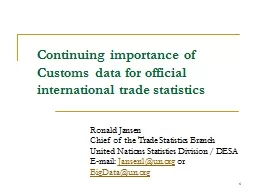PDF-THE OVERRATED IMPORTANCE OF STATISTICS IN RESEARCH by Dennis Roberts
Author : tatyana-admore | Published Date : 2015-09-17
TYPICAL SIMPLE STUDY To lay out an example for discussion consider perhaps the simplest form of a true experiment where two levels of a treatment IV are given to
Presentation Embed Code
Download Presentation
Download Presentation The PPT/PDF document "THE OVERRATED IMPORTANCE OF STATISTICS I..." is the property of its rightful owner. Permission is granted to download and print the materials on this website for personal, non-commercial use only, and to display it on your personal computer provided you do not modify the materials and that you retain all copyright notices contained in the materials. By downloading content from our website, you accept the terms of this agreement.
THE OVERRATED IMPORTANCE OF STATISTICS IN RESEARCH by Dennis Roberts: Transcript
Download Rules Of Document
"THE OVERRATED IMPORTANCE OF STATISTICS IN RESEARCH by Dennis Roberts"The content belongs to its owner. You may download and print it for personal use, without modification, and keep all copyright notices. By downloading, you agree to these terms.
Related Documents

